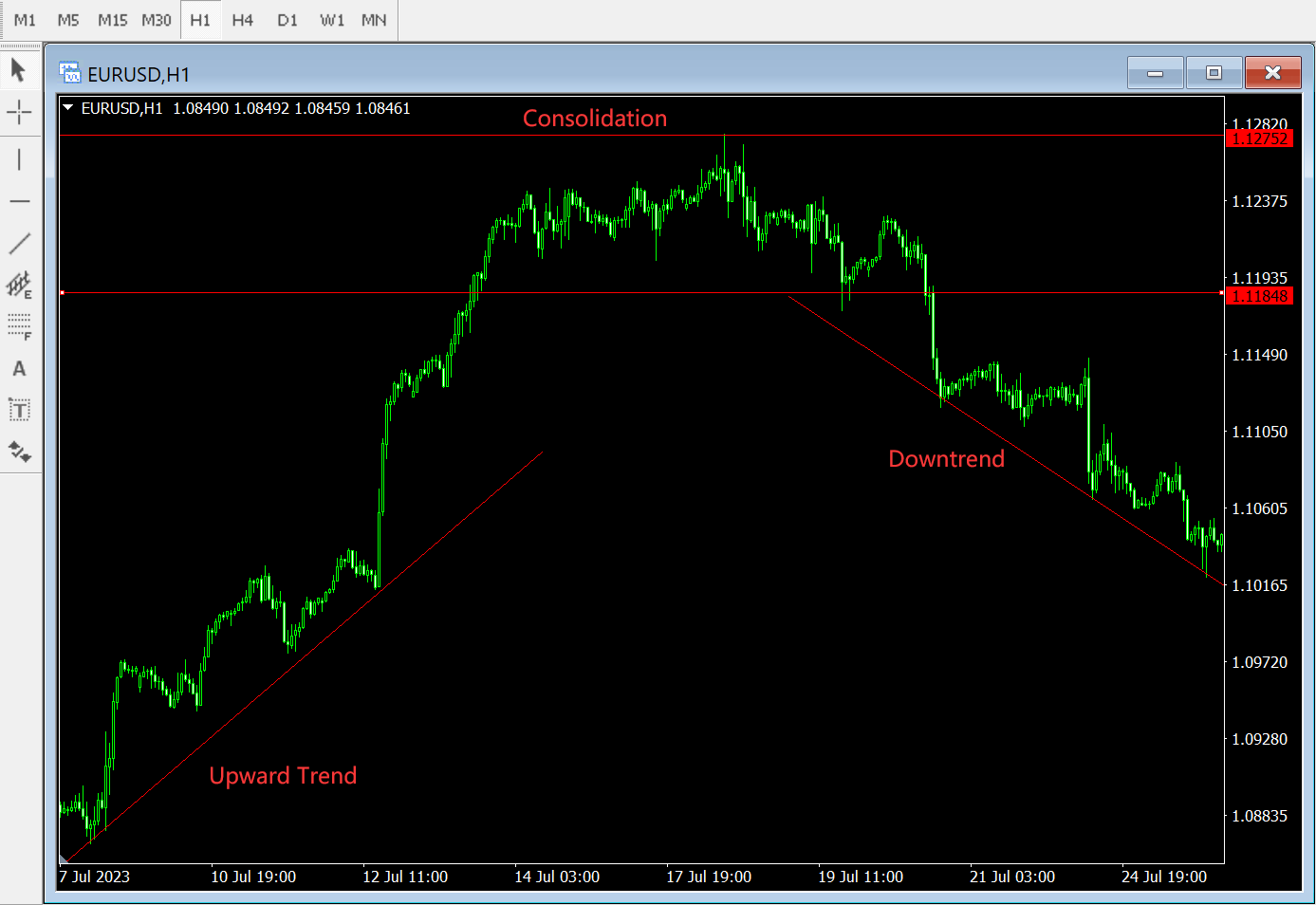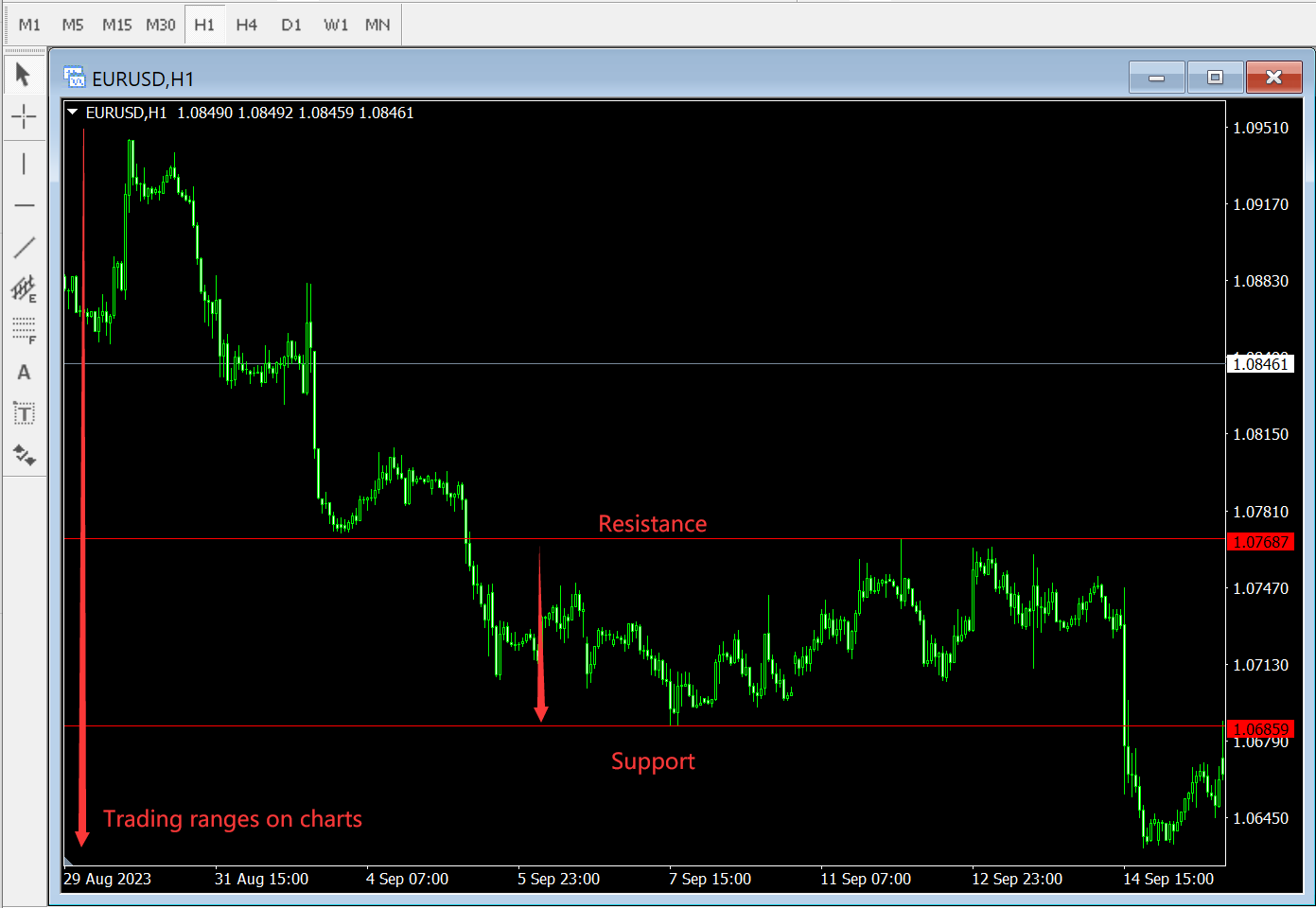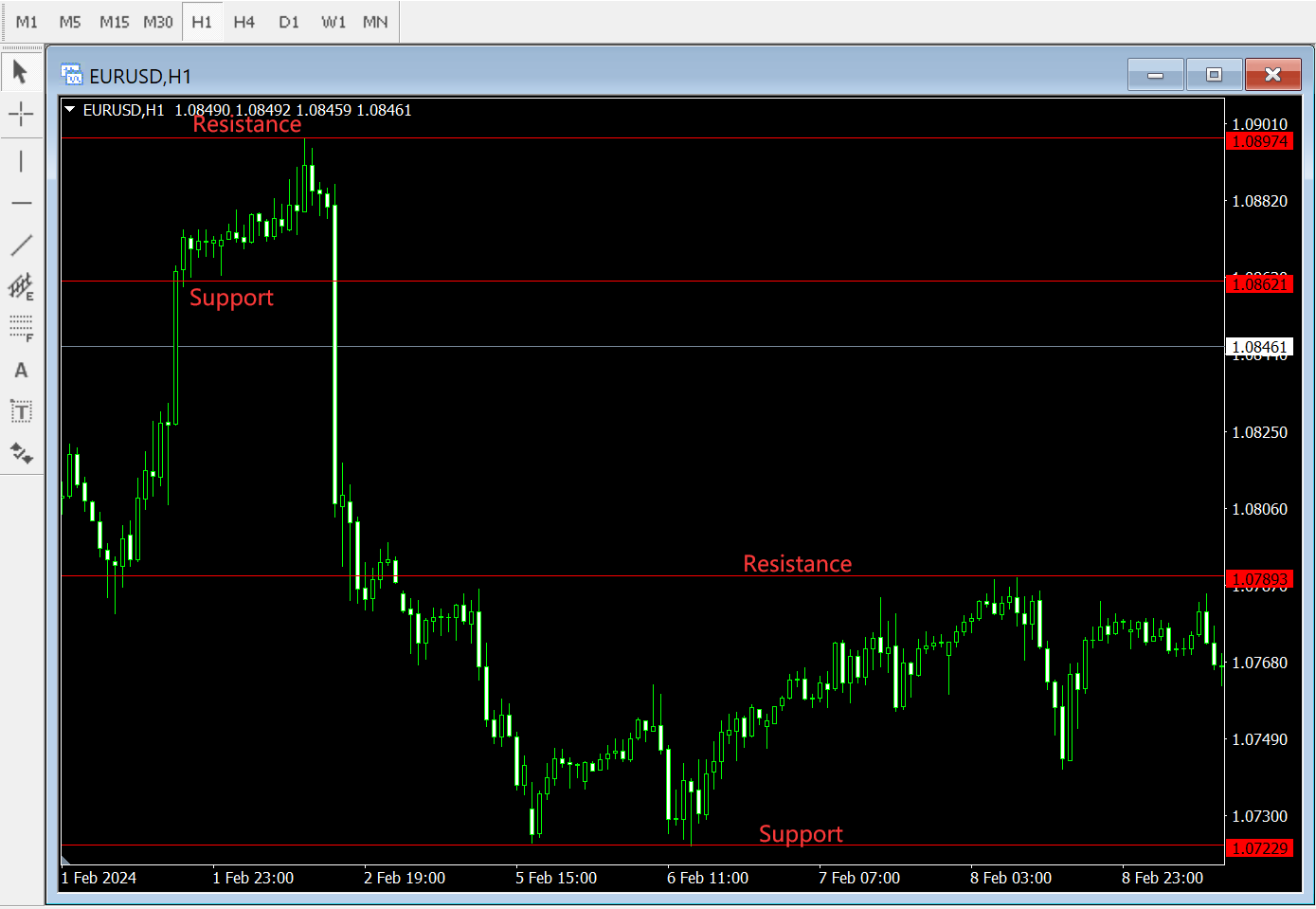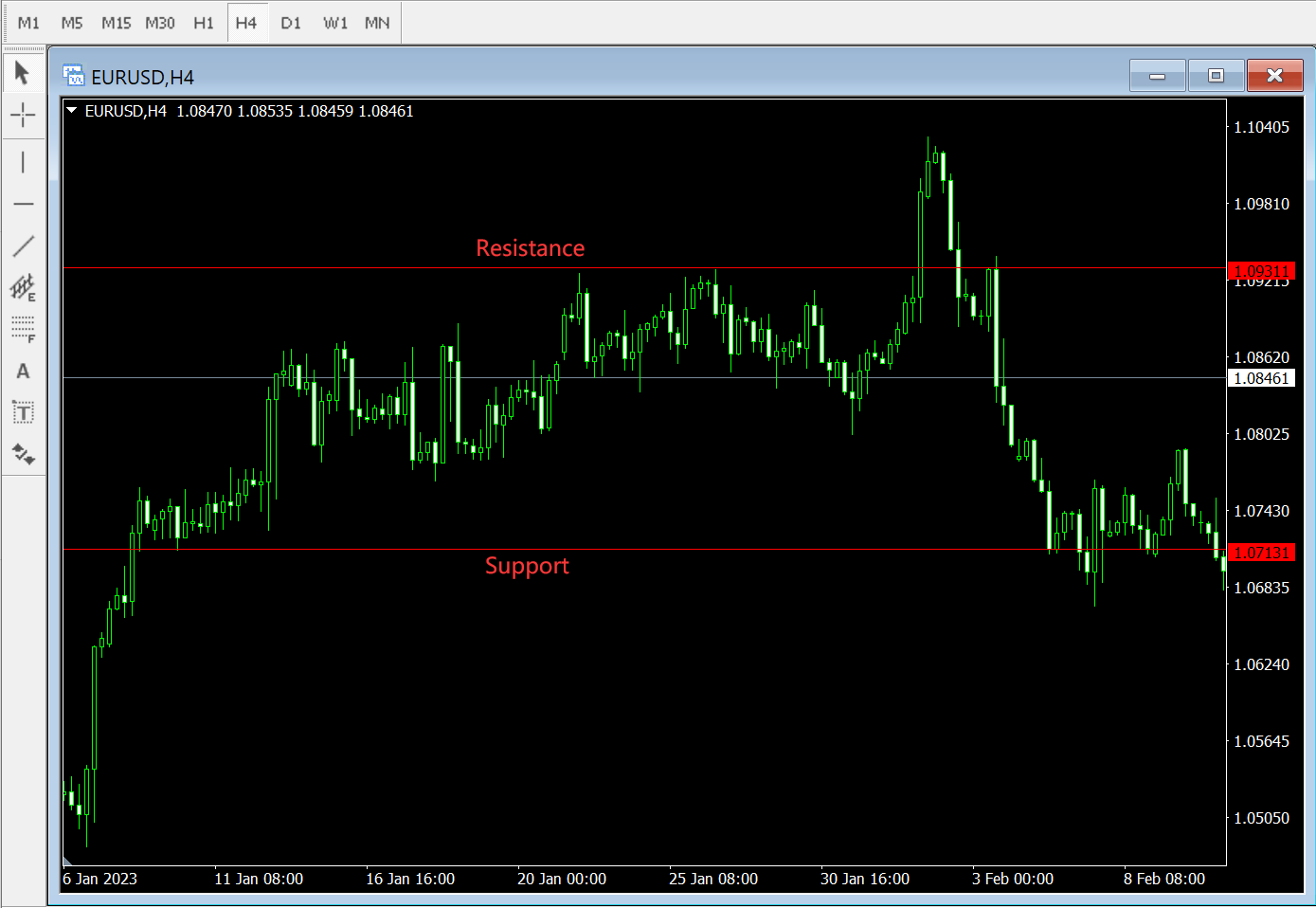I. Consolidation Pattern in Forex Trading
Life should generally be kept simple—yet people unconsciously complicate it—this applies to forex trading in consolidation markets as well. The forex market can only be in three states: up, down, or sideways. If the market isn’t trending up or down, it’s consolidating. This sideways movement is often referred to as consolidation (see the chart below).

Understanding the forex fundamental data and its importance, as well as its impact on the forex market and different currency prices, is crucial. Before the release of fundamental data, the market usually consolidates within a narrow trading range, but consolidation doesn’t only occur before data releases.
Believe it or not, the market spends 50% to 60% of the time in consolidation, with the remaining time in trend movements. This is why traders’ systems work well in trending markets but fail miserably in consolidations.
Therefore, when building your forex trading system, prepare two different systems: one for trending markets and one for consolidations, so you can handle any market situation with ease.
For traders, learning how to identify consolidation and pips from it is similar to the approach in trending markets. During consolidation, the support and resistance levels of the trading range are usually horizontal. However, the range can vary depending on the chart pattern and time frame.
For example, in an hourly chart, the range might be 30 pips, while on a daily chart, it could be 400 pips or more (see the chart below).

II. Causes of Forex Consolidation
There are generally two reasons why forex markets begin to consolidate, accumulate, and move sideways.
-
The first reason for market consolidation is that everyone is waiting for the release of fundamental data. At this time, traders pause their activities, anticipating a significant move or breakout after the data is released. This pause in trading leads to what is commonly known as a “narrow fluctuation range” or “small trading range.” These small ranges, typically 20 to 60 pips, are easier to spot in shorter time frames, like 1-hour or 30-minute charts (see the chart below).

-
The second reason for consolidation might be a country’s economic intervention in the exchange rate market, keeping the currency’s fluctuations within a certain range. Usually, a country has a tolerance level for their currency’s fluctuation range, such as 400 basis points.
For example, if Japan wants to stabilize the exchange rate of the yen to the dollar within a range of 108 to 112 yen per dollar, then Japan’s tolerance range is 400 basis points. A country may want to maintain its exchange rate within a certain range for import/export reasons or because they believe it benefits from stimulating imports or exports. If so, the market’s consolidation phase could last a long time.
Larger trading fluctuation ranges of 150 to 400 basis points, sometimes even more, can also last for extended periods, like several weeks or months. Such trends are easier to find in longer time frames, such as 4 to 8-hour charts or daily charts. As shown in the chart below, the euro consolidated within a 300 pip range for over a month.

The inherent rule that forex markets can only move up, down, or sideways, and the fact that markets are in consolidation 50% to 60% of the time, makes it essential to learn how to trade both types of consolidation.
Typically, there are three trading strategies available for dealing with forex market consolidation, accumulation, and sideways movements.
III. Not All Forex Fundamental Data Can Trigger Market Fluctuations
In theory, if the economic and fundamental data released are not different from previous data, the forex market should not move. However, trading is not an exact science. The market can fluctuate in any direction at any time.
If the market breaks out of a consolidation range and triggers one of your pending orders, only to fall back into consolidation, this trend may be due to the market being overly emotional, causing everyone to change their trading direction. Conversely, if the market breaks out of the consolidation range and then returns to it, it signifies something different.
Technically, this could mean that the market is about to move in the opposite direction. This is why straddle trading involves placing two orders at once. If the market reverses, you can still benefit.
During the period awaiting the release of fundamental data, the market is extremely sensitive—anything is possible. If the market reverses, your earlier positions are likely to be stopped out, and your only chance to recover losses is to have the courage to hold the opposite position. You must be agile and quick to switch from a long to a short position.
Charts speak, and you must listen carefully to what the market is telling you.
To become a successful forex trader, you must learn to trade based on charts, not your emotions. You must learn to observe market movements with your own eyes, “listen” to the market’s voice, and respond to trades without any emotional bias.
IV. Summary of Consolidation Pattern in Forex Trading
Most of the time, the release of forex fundamental data can bring dramatic changes to the market. Always remember, the only constant in life is change.
Exchange rates may react violently to the released forex fundamental data, or they may not react at all. Well-trained, successful traders tend to respond actively, rather than passively adapt, to the release of fundamental data. They are always fully prepared, ready to switch from long to short as soon as the signal appears.
Trading in the forex market with the release of fundamental data and trading without it can be quite different, sometimes even unexpectedly so. In a 4-5 hour trading period, there could be a market fluctuation of 150-300 points.
When you trade, your future depends on many things. In this market, often you can only rely on yourself—your education, your emotions, and the behavior you exhibit as a result. If you have mastered the correct trading methods, participating in range-bound market trading can be very interesting.
I sincerely hope that through the content, you will be able to take advantage of the market during range-bound situations, rather than being taken advantage of by the market.